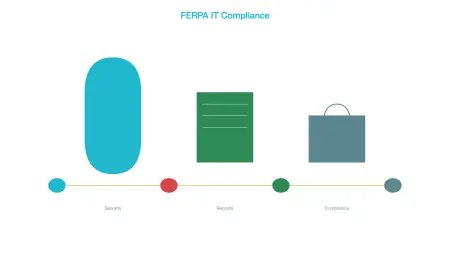Jewelry Photography vs AI Jewelry Photography: A Comparison
Traditionally, professional jewelry photography has been the gold standard—requiring high-resolution cameras, specialized lighting, and skilled photographers to capture the sparkle and elegance of each piece.
The jewelry market thrives on visual storytelling. From high-end diamond rings to artisan-crafted earrings, customers rely heavily on imagery to gauge quality, detail, and craftsmanship before making a purchase. Traditionally, professional jewelry photography has been the gold standard—requiring high-resolution cameras, specialized lighting, and skilled photographers to capture the sparkle and elegance of each piece.
However, the industry is rapidly shifting with the rise of AI-driven solutions. Today, brands are exploring alternatives like AI jewelry photography to streamline production, lower costs, and scale imagery across digital platforms. But how does this compare to traditional methods? Let’s break down the advantages, challenges, and opportunities of each approach.
Why Jewelry Photography Matters
Jewelry is one of the most challenging products to photograph. Its reflective surfaces, intricate designs, and need for flawless presentation make professional imagery essential. Here’s why photography plays such a crucial role:
-
Trust and Authenticity: Customers can’t physically touch jewelry when shopping online. High-quality images help bridge that gap by showcasing clarity, sparkle, and craftsmanship.
-
Emotional Connection: Jewelry often represents milestones—engagements, anniversaries, or personal achievements. Strong visuals elevate emotional storytelling.
-
Competitive Edge: With countless brands competing online, standout product images can be the deciding factor in conversions.
-
Consistency Across Platforms: Whether on social media, e-commerce websites, or print catalogs, consistent visuals reinforce brand identity.
Without compelling visuals, even the most stunning jewelry can lose its appeal. This is where both traditional photography and AI alternatives come into play.
Traditional Jewelry Photography: Strengths and Challenges
Strengths
-
Unmatched Detail and Realism
Professional jewelry photographers understand how to capture the brilliance of gemstones and the texture of metals with precision.
-
Creative Direction
Human photographers can tailor lighting, angles, and backdrops to create a specific brand aesthetic.
-
Tactile Authenticity
Real photography conveys the actual product as it exists, helping reassure customers about authenticity.
Challenges
-
High Costs: Hiring photographers, renting studios, and post-production editing add up quickly.
-
Time-Consuming: Shooting, editing, and preparing each image can take hours or even days.
-
Scalability Issues: For brands with large catalogs, photographing every item is often impractical.
-
Inconsistencies: Lighting changes, photographer styles, and other factors can cause visual differences across product lines.
AI Jewelry Photography: A New Approach
The emergence of AI-powered imagery is transforming how jewelry brands present products online. Instead of traditional cameras, AI leverages algorithms to generate, retouch, and enhance visuals with incredible precision.
With tools like , brands can create professional-grade visuals without the overhead of traditional shoots.
Benefits of AI Jewelry Photography
-
Cost-Effective
AI eliminates the need for expensive setups, drastically lowering production costs.
-
Faster Turnaround
Instead of scheduling shoots and waiting for edits, AI can generate or enhance product photos in minutes.
-
Scalability
Perfect for e-commerce platforms with extensive inventories—AI can handle hundreds of images consistently.
-
Retouching and Perfection
Imperfections such as fingerprints, dust, or lighting issues can be corrected automatically with AI-powered retouching.
-
Creative Flexibility
AI can easily change backgrounds, add realistic shadows, or adapt styles to fit brand campaigns.
How AI Jewelry Photography Works in Practice
AI-driven photography typically follows these steps:
-
Image Input: Brands upload existing product photos or 3D models.
-
Enhancement and Retouching: AI automatically sharpens details, removes flaws, and enhances reflections.
-
Background Customization: Jewelry can be placed against minimalistic or styled backdrops, ready for social media or e-commerce.
-
Consistency Optimization: The AI ensures every product image adheres to the same lighting, angles, and color balance for cohesive branding.
-
Output and Deployment: Finalized images are ready for immediate use across websites, online marketplaces, or ad campaigns.
This streamlined process significantly reduces the time and effort required compared to traditional methods.
Comparing Traditional vs AI Jewelry Photography
|
Feature |
Traditional Photography |
AI Jewelry Photography |
|
Cost |
High (equipment, studio, editing) |
Lower, subscription-based tools |
|
Time Required |
Hours to days per item |
Minutes per image |
|
Scalability |
Limited for large catalogs |
Highly scalable for hundreds of products |
|
Realism |
100% authentic product shots |
AI-enhanced but visually convincing |
|
Customization |
Creative control via photographer |
AI offers flexible, quick background swaps |
|
Consistency |
May vary across shoots |
Uniform across all outputs |
Both approaches have unique strengths. Traditional photography remains essential for high-value campaigns where authenticity is critical, while AI offers efficiency and scalability for everyday e-commerce needs.
The Role of AI Technology in Jewelry Marketing
AI isn’t just changing how photos are produced—it’s revolutionizing marketing as a whole. With advanced algorithms, brands can:
-
Personalize Ads: Use customer data to showcase jewelry styles tailored to individual preferences.
-
Test Visuals Quickly: Deploy multiple variations of images to see which perform best in ads.
-
Leverage AR/VR: Combine AI photography with virtual try-on features for an immersive shopping experience.
By integrating AI-powered photography with broader digital strategies, brands can stay ahead of consumer expectations while reducing operational overhead.
Future Trends in Jewelry Photography
Looking ahead, AI is set to play an even greater role in jewelry marketing. Some key trends include:
-
Hyper-Realistic Rendering: AI will generate visuals indistinguishable from real-life photos.
-
3D Product Visualization: Customers will interact with jewelry in 360-degree formats online.
-
Seamless Integration with Social Commerce: AI-optimized imagery will dominate platforms like Instagram Shops, TikTok, and Pinterest.
-
Sustainable Practices: Reduced need for physical shoots will lower energy usage and waste.
These trends indicate that AI isn’t replacing photographers entirely but complementing them—offering brands a hybrid strategy for maximum impact.
Conclusion
Jewelry brands face a pivotal choice: continue investing heavily in traditional photography or embrace AI solutions for efficiency and scale. While traditional methods excel at authenticity and high-value campaigns, AI-powered photography provides cost savings, consistency, and faster turnaround—perfect for e-commerce growth.
As tools become more advanced, brands can strike a balance between artistry and technology to meet modern consumer expectations.
For forward-thinking jewelers, the future lies in blending both worlds—leveraging the emotional depth of traditional photography with the speed and innovation of AI.
What's Your Reaction?
 Like
0
Like
0
 Dislike
0
Dislike
0
 Love
0
Love
0
 Funny
0
Funny
0
 Angry
0
Angry
0
 Sad
0
Sad
0
 Wow
0
Wow
0


















































